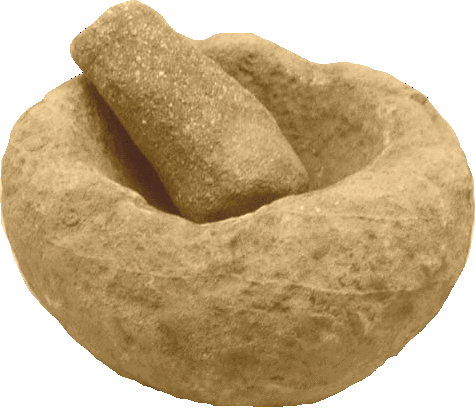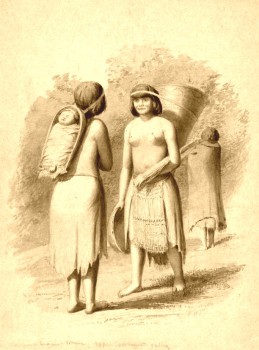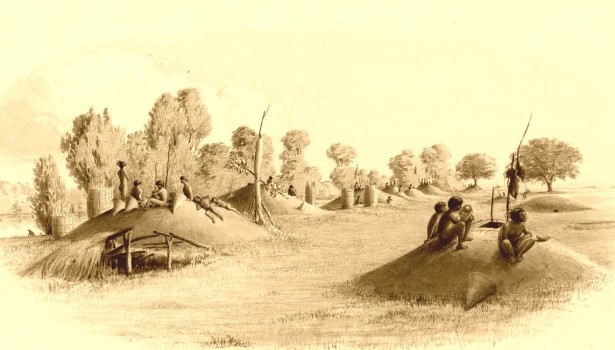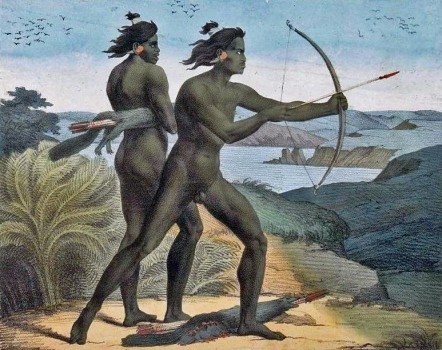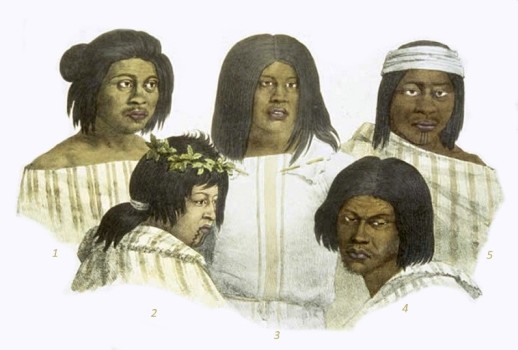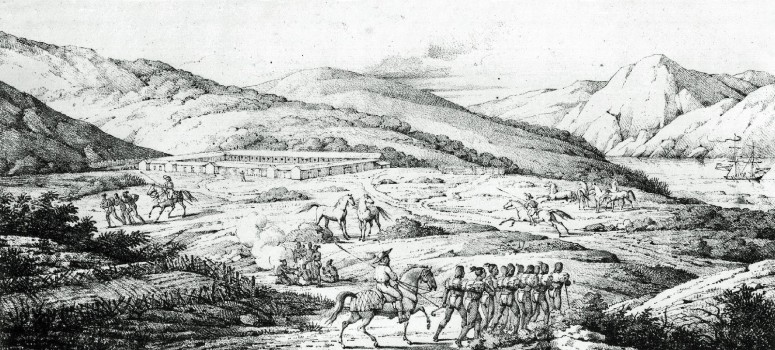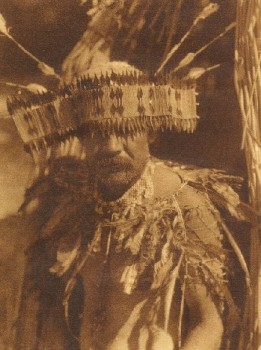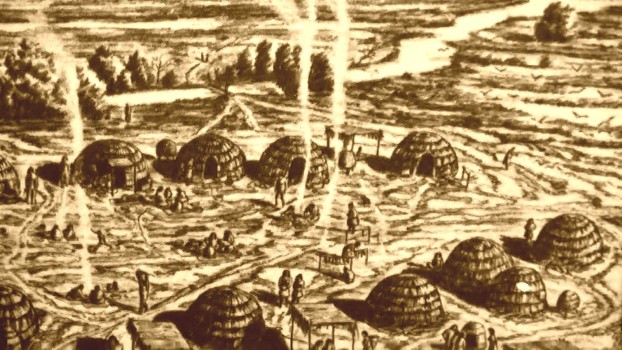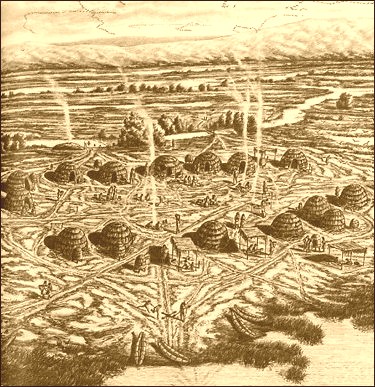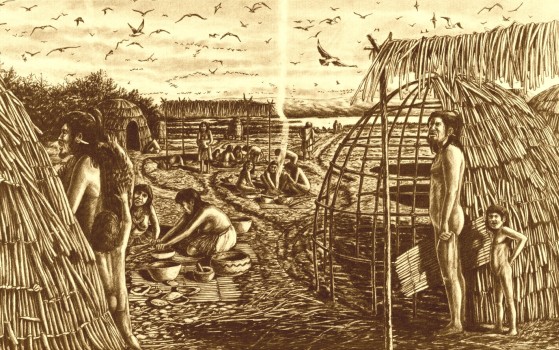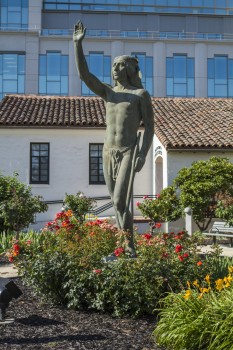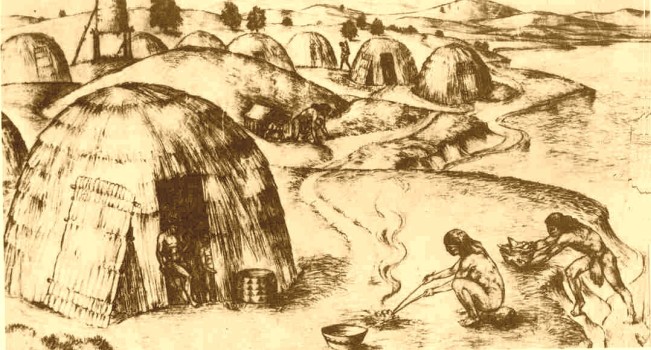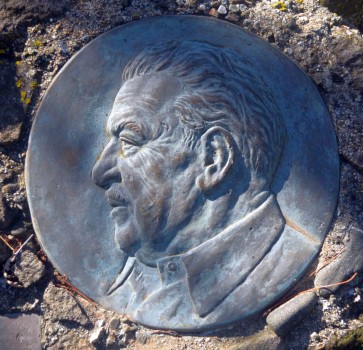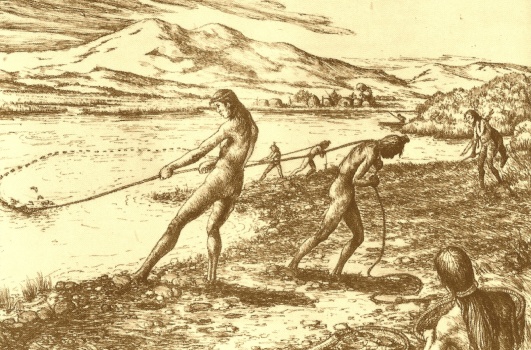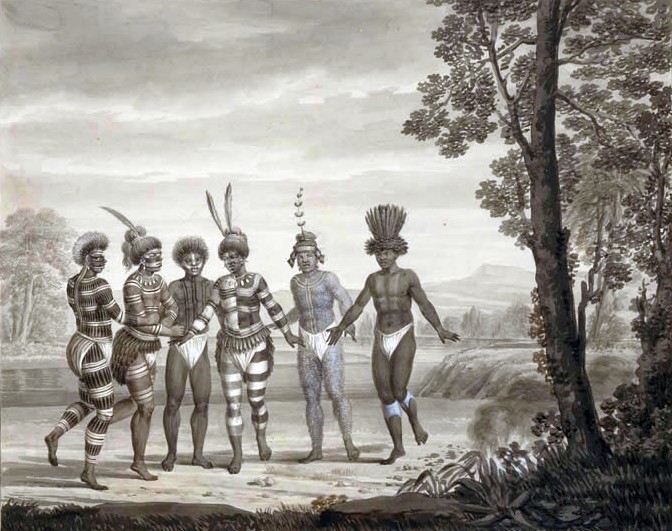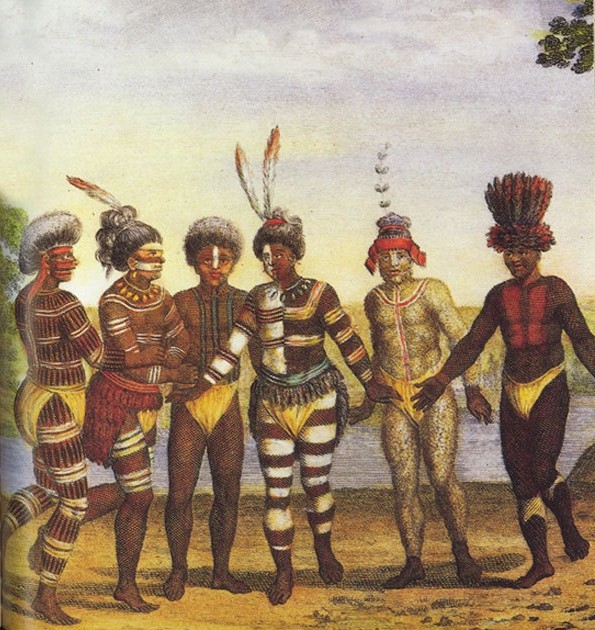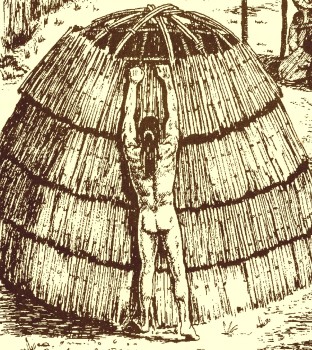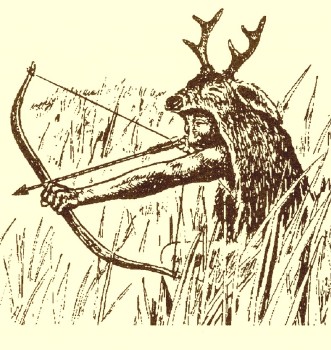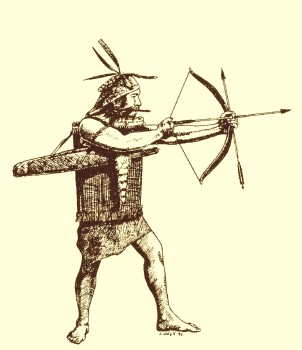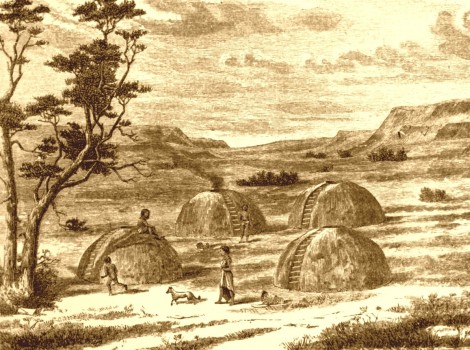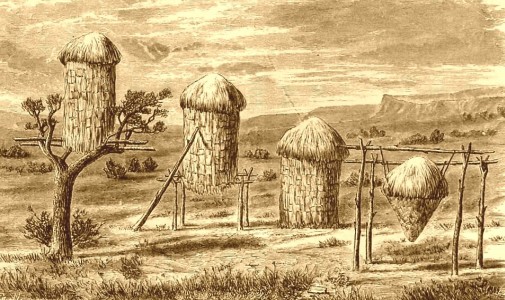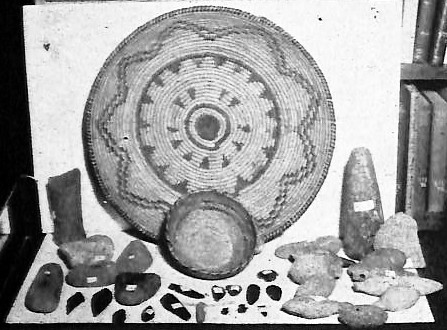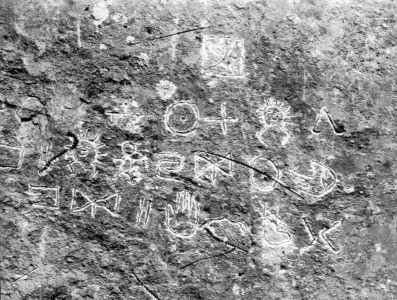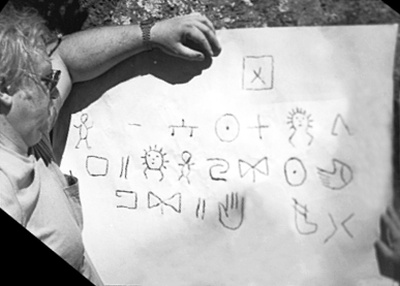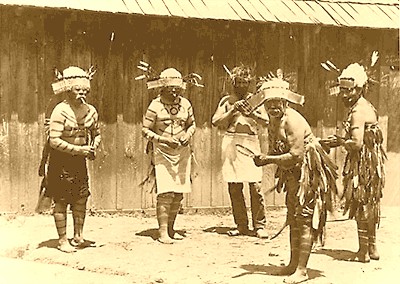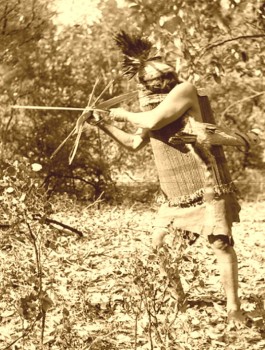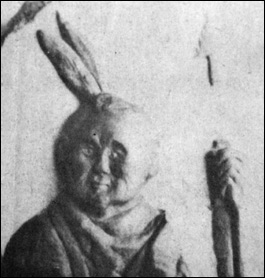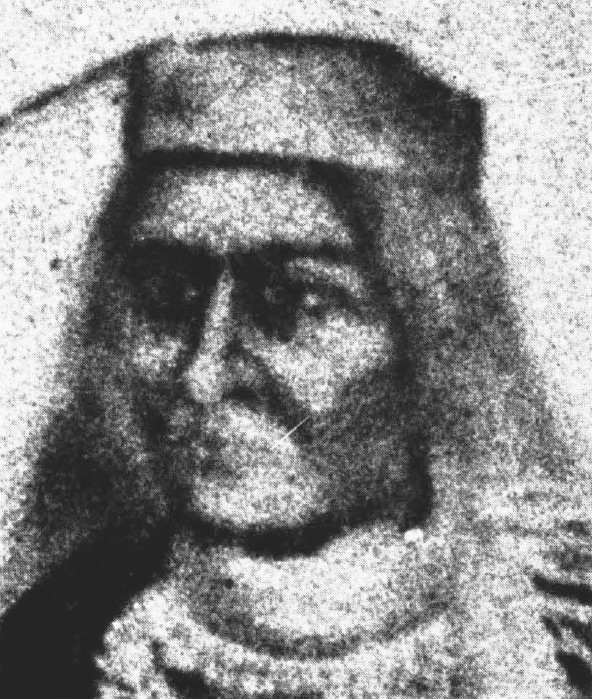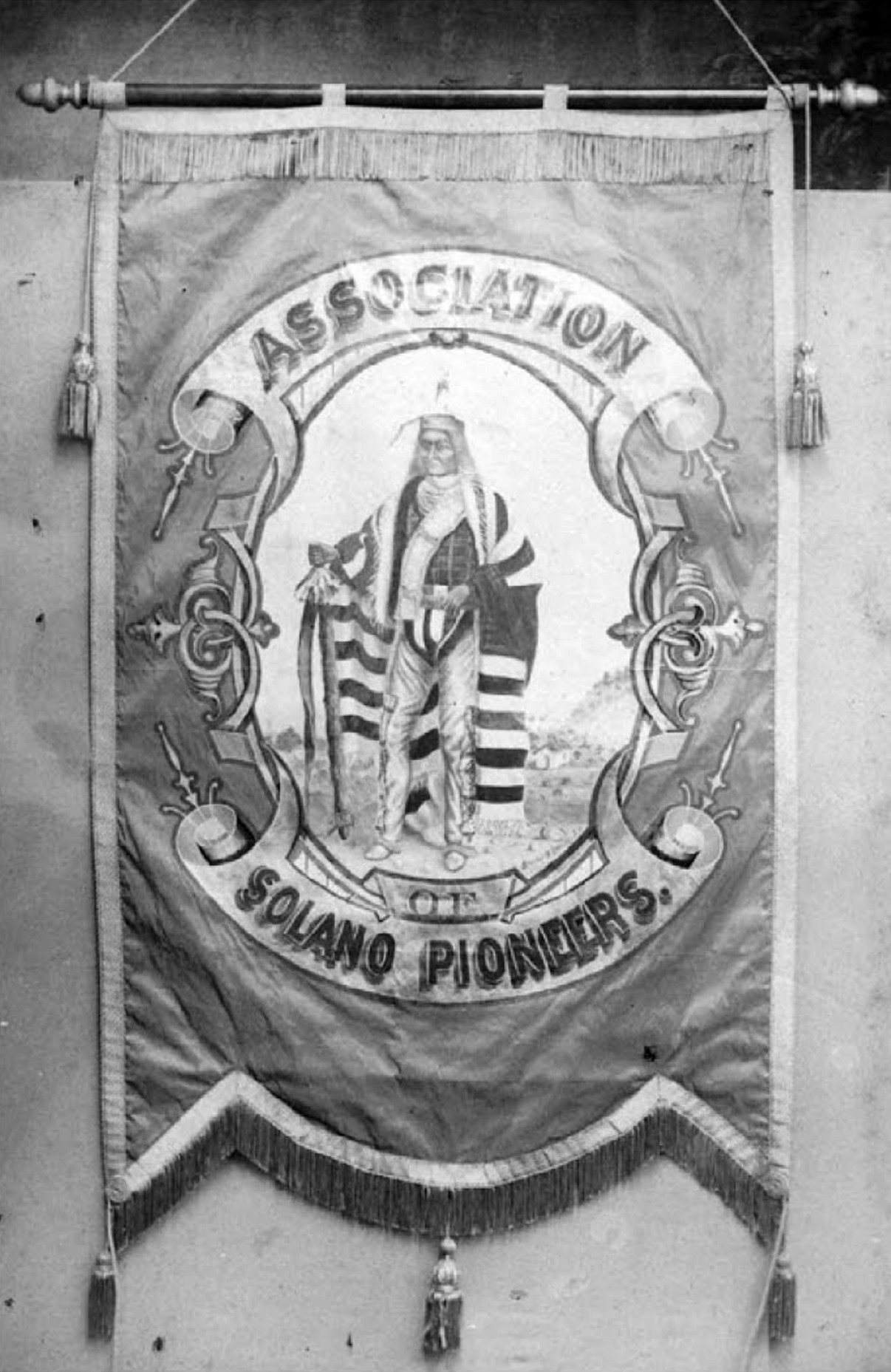|
on the Indians of Suisun Valley
|
Primary Sources (academic studies and historical accounts)Bancroft, Hubert Howe (1875), "The Native Races of the Pacific States of North America: Wild Tribes" in The Works of Hubert Howe Bancroft, D. Appleton & Co., New York, v. I, p. 362-363, 452.
Bancroft, Hubert Howe (1884-1890), "History of California (in 7 volumes)" in The Works of Hubert Howe Bancroft, A.L. Bancroft & Co., San Francisco, California, v. XVIII-XXIV. ----- (1885), "History of California: Vol. II, 1801-1824", v. XIX, p. 91-92 (Moraga's 1810 fight at Suisun), p. 321-323 (Sanchez & Abella's 1811 expedition to Suisun), p. 328-329 (Sanchez 1817 fight at Suisun), p. 329-330 (Abella's 1817 journeys), p. 497-500 (Sanchez & Altimira's 1823 expedition to Suisun), p. 571 (Gabriel Moraga biography), and p. 686 (Ramon Abella in Pioneer Index). ----- (1886), "History of California: Vol. III, 1825-1840", v. XX. p. 295, 360 & 598 (mentions of Francisco Solano). ----- (1886), "History of California: Vol. IV, 1841-1845", v. XXI, p. 71-3, 444 & 674 (mentions of Francisco Solano), p. 647 (Ramon Abella biography), p. 744-745 (Gabriel Moraga in Pioneer Index). ----- (1886), "History of California: Vol. V, 1846-1848", v. XXII, p. 710 (José Sanchez in Pioneer Index), p. 727 (Francisco Solano in Pioneer Index), p. 757-759 (Mariano Vallejo in Pioneer Index). Barrett, S.A. (1908), The Ethno-Geography of the Pomo and neighboring Indians, University of California Publications in American Archaeology and Ethnology (edited by Alfred Kroeber), Berkeley, California, v. 6, n. 1, p. p. 284-285, 292-294 & 298-300.
Beebe, Rose Marie; Senkewicz, Robert M. et al. (2006a), "Isidora Filomena" in Testimonios: Early California Through the Eyes of Women, 1815-1848, Heydey Books, Berkeley, CA, p. 3-16. ----- (2006b), "Dorotea Valdez" in Testimonios: Early California Through the Eyes of Women, 1815-1848, Heydey Books, Berkeley, CA, p. 31-41. Benney, James (2006), North American Indian Sites in the East Bay Hill: A Guidebook, Rocky Ridge Publications, Orinda, California, 61 p. Bennyhoff, James (1961), The Ethnogeography of the Plains Miwok, Unpublished Ph.D. Dissertation in Anthropology, University of California, Berkeley. ----- (1977), The Ethnogeography of the Plains Miwok, Center for Archaeological Research at Davis, Publication Number 5, University of California, Davis, California, 181 p.
Boulé, Mary Null (1992), California Native American Tribes: Patwin Tribe, Merryant Publishing, Vashon, Washington, 52 p.
Central Solano County Cultural Heritage Commission (1977), "The Indian Presence and the Coming of the Europeans" in Our Lasting Heritage: An Historic and Archaeological Preservation Plan for Central Solano County, Prepared by the Central Solano County Cultural Heritage Commission for the Solano County Board of Supervisors, p. 11-18.
Cerruti, Enrique (1874) - see Solano (1874), and Valdez (1874). Cook, Sherburne F. (1976), The Population of the California Indians,1769-1970, University of California Press, Berkeley, California. 239 p.
----- (1978), "Historical Demography" in Handbook of North American Indians - California (Robert F. Heizer, ed.), Smithsonian Institution, Washington, D.C., v. 8, p. 91-98.
Farmer, Tom (1999), "The Crossroads: A History of the Fairfield-Suisun Area" in The Heritage Collection: Sites, Structures and History of Fairfield and Vicinity (Compiled by The Heritage Society of West Central Solano for the City of Fairfield), Wheeler Printing, Inc., Allejo, California, p. 94-104. Heizer, R.F. ed. (1953), "Archaeology of the Napa Region" in Anthropological Records (journal), University of California Press, Berkeley, California, v. 12, n. 6, p. 225-358. ----- (1966), "Map of Native Tribes, Groups, Language Families and Dialects of California in 1770" in Languages, Territories, and Names of California Indian Tribes, University of California Press, Berkeley, California, Map 4. Heizer, Robert F. and Hester, Thomas R. (1970), "Names and Locations of some Ethnographic Patwin and Maidu Villages", in Contributions of the University of California Archaeological Research Facility, No. 9 (Papers on California Ethnography), Chap. 5, p. 79-118. Howard, Benjamin C. (1855), Cases Argued and Decided in the Supreme Court of the United States: December Terms, 1854, Little Brown and Company (Law Publishers and Booksellers), Boston, v. XVII, p. 525-541.
Johnson, Patti J. (1978), "Patwin" in Handbook of North American Indians - California (Robert F. Heizer, ed.), Smithsonian Institution, Washington, D.C., v. 8, p. 350-360. Kroeber, Alfred L. (1916), "California Place Names of Indian Origin" in American Archaeology and Ethnology, University of California Publications, Berkeley, California, v. 12, n. 2 (June 15, 1916), p. 31-69. ----- (1925), "Chapter 26: The Wintun: Geography and Culture" in Handbook of the Indians of California, Smithsonian Institution, Washington, D.C., p. 351-363. ----- (1932), The Patwin and their neighbors, University of California Publications in American Archaeology and Ethnology, Berkeley, California, v. 29, p. 253-423. Lothrop, Marian Lydia (1932), "The Indian Campaigns of General M. G. Vallejo" in Quarterly of the Society of California Pioneers, v. XI, n. 3 (September 1932), p. 161-205 (188, 196-198).
Low, M. Clyde (1986), "Chief Solano: The Legend Examined" in The Solano Historian (journal), v. 1, n.2 (may, 1986), p. 5-10 & 22. ----- (1996), "A Letter to the Editor Concerning Chief Solano" in The Solano Historian (journal), V. XII, n. 1, p. 2 & 28. McKern, W.C. (1922), "Functional Families of the Patwin" in American Arachaeology and Ethnology, University of California Publications, Berkeley, California, v. 13, no. 7 (April 12, 1922), p. 235-258. ----- (1923), "Patwin Houses" in American Ethnology (A.L. Kroeber, ed.), University of California Publications, Berkeley, California, v. XX, no. 10, p. 159-171. Milliken, Randall (1993), "Ethnographic and Ethno-historic Context for the Archaeological Investigation of the Suisun Plain, Solano County, California" in Archaeological Data Recovery at Prehistoric Site CA-Sol-355/H, Green Valley, Solano County, California (edited by R. Wiberg), Unpublished, proprietary report prepared by Holman and Associates, San Francisco, California. ----- (1995), A Time of Little Choice: The Disintegration of Tribal Culture in the San Francisco Bay Area 1769-1810, edited by T. C. Blackburn, Ballena Press Anthropological Papers, No. 43, Menlo Park, California, p. 180-181, 204-211, 228, 247, 255, 257 & 258. ----- (2009), Ethnohistory and Ethnogeography of the Coast Miwok and their Neighbors, 1783-1840, Prepared by Archaeological and Historical Consultants of Oakland, California for the National Park Service of the Golden Gate National Recreation Area in San Francisco, California, p. 27. Milliken, Randall; Shoup, Laurence H. and Ortiz, Beverly R. (2009), Ohlone/Costonoan Indians of the San Francisco Peninsula and Their Neighbors, Yesterday and Today, Prepared by Archaeological and Historical Consultants of Oakland, California for the National Park Service of the Golden Gate National Recreation Area in San Francisco, California, Solicitation Q8158020405, p. 111, 114-166 & 316 (Table F5). Northrup, Marie (1984), Spanish-Mexican Families of Early California: 1769-1850, Southern California Genealogical Society, Burbank, California, 2 v.
Peterson, Marcus (1957), The Career of Solano, Chief of the Suisuns, Masters of Arts Thesis, University of California at Berkeley, 93 p. Powers, Stephen (1877), "Pat-win' (Chapter XXIV) of Tribes of California" in Contributions to North American Ethnology, Government Printing Office, Washington, D.C., v. III, p. 218-228. ----- (1874), "The California Indians - The Patweens" in Overland Monthly and Out West Magazine, v. 13, n. 6 (Dec. 1874), p. 542-550.
Sanchez, Nellie van de Grift (1914), Spanish and Indian Place Names of California, A.M. Robertson, San Francisco, California, p. 268-271. ----- (1922), Spanish and Indian Place Names of California (2nd Edition), A.M. Robertson, San Francisco, California, p. 274-277. ----- (1930), "My Years with Chief Solano by Isidora (Princess Solano) - translated by Nellie van de Grift Sanchez" in Touring Topics (magazine), Automobile Club of Southern California, v. 22, n. 2 (Feb. 1930), p. 39 & 52.
----- (1933), "Solano, California's noted Indian" in Motorland (Magazine), California State Automobile Association, San Mateo, California, v. XXXII, n. 2 (Feb. 1933). Simpson, George (1847), An Overland Journey Round the World Durng the Years 1841 and 1842, Lea and Blanchard, Philadelphis, p. 171-177.
Solano, Isidora Filomena (1874), AUTOBIOGRAPHY: Isidora, widow of California Indian chief, Solano (Recorded by Henry Cerutti and certified by Salvador Vallejo and M.A. McLaughlin), No. 12, an annotated transcript of an interview conducted in Spanish by Henry Cerruti on April 10, 1874 at the Mariano Vallejo home in Sonoma, California. Manuscript kept at The Bancroft Library, University of California, Berkeley, 10 p. Also available online at OAC (Online Archive of California). Last accessed on 2018-02-23. Vallejo, Mariano (1850), "Derivation and Definition of Solano County" in History of Solano County (by J.P. Munro-Fraser, published 1879), Wood, Alley & Co., San Francisco, California, p. 17-18. Vallejo, Platon M.G. (1914), Memoirs of the Vallejos, arranged for publication by James H. Wilkins, original manuscript in the collection of the Bancroft Library, University of California, Berkeley, California, p. 11, 29-30 & 44-45. Subsequently published in serialized form in the San Francisco Bulletin (newspaper), Jan. 27-Feb. 14, 1914.
Valdez, Dorotea (1874), Reminiscenses of Dorotea Valdez with Reference to Appearance of Solano in Monterey, (Recorded by Henry Cerutti and certified by José Abrego), an annotated transcript of an interview conducted in both English and Spanish by Henry Cerruti on April 27, 1874 at the Rosalia Vallejo home in Monterey, California. Manuscript kept at The Bancroft Library, University of California, Berkeley, 14 p. Also available online at OAC (Online Archive of California). Last accessed on 2018-03-17. Newspaper articles (reliable in content, but unreferenced)Bowen, Jerry (2010a), Suisun Indian Timeline, Solano History Exploration Center (online website), Suisun City, California - Last accessed 2018-02-14 ----- (2010b), Old Stone Building Sparks New Historical Research and Discoveries, Solano History Exploration Center (online website), Suisun City, California - Last accessed 2018-02-23.
----- (2006), "The Story of Chief Solano" in The Vacaville Reporter (newspaper), Vacaville, California. This is a combination of the following three articles: "PART 1 - Asistencia Built Near Rockville" (Issue Oct. 29, 2006), "PART 2 - Francisco Solano becomes a mission alcalde" (Issue Nov. 12, 2006), and "PART 3 - Buckeye tree may be Chief Solano burial site" (Issue Nov. 26, 2006). ----- (2000), "Chief Solano's favorite wife tells her story" in The Vacaville Reporter (newspaper), Vacaville, California, Issue Jan. 6, 2000.
Low, M. Clyde (2003), "Chief Solano: The rest of the story" in Moments in History: Articles about Fairfield, Solano County and the people who made this area their home (Barbara Van Putten and Kathleen L'Ecluse, eds.),Solano Daily Republic (newspaper), Fairfield, California, p. 21.
----- (2004), "Cyde Low Patwin Indian Interview (video)" in Fairfield, Our History (video), Fairfield City Productions, Fairfield, California. Available on the Solano History Exploration Center (online website), Suisun City, California - Last accessed 2018-02-25.
Simmons, Kathryn (1905), "Traditions and Landmarks of Yolo" (A paper written and read before the Federation of Women's Improvement Clubs and the Woodland Shakespeare Club) in Daily Democrat (newspaper), Woodland, California, Thursday, Feb. 16, 1905, p. 4. Thompson, Ian (2003), "Rockville scratches tell of Indian travels" in Moments in History: Articles about Fairfield, Solano County and the people who made this area their home (Barbara Van Putten and Kathleen L'Ecluse, eds.),Solano Daily Republic (newspaper), Fairfield, California, p. 21.
----- (2012), "Mysterious petroglyphs may be sign of early pioneer explorer" in Solano Daily Republic (newspaper), Fairfield, California, Issue January 19, 2012. Taylor, Alex S. (1860), "California Notes: The Indianology of California - No. 3 The Indians of San Rafael and North Bay Valleys" in California Framer, San Francisco, California, v. XIII, n. 7, p. 50. Popular Reading (but less historical value)Davis, Mary Jean (1934), "Chief Francisco Solano" in Official Program of Unveiling Ceremonies: Chief Solano Monument, June 3, 1934, Massassoit Tribe of Fairfield and the Redmen of the Reservation of Fairfield, Fairfield, California, p. 1-2. ----- (1937), "Chief Francisco Solano" in California Highway Patrolman (magazine), v. 1, n. 6 (Aug. 1937). Dingler, Nancy (2000a), "Chief Solano's grave shrouded in mystery" in Solano Daily Republic (newspaper), Fairfield, California, Issue April 29, 2000. ----- (2000b), "Rockville Park - Site of Massacre in 1810" in Solano Daily Republic (newspaper), Fairfield, California, Issue Sept. 22, 2000. Konti, Kris Delaplan (1995), "Tragic Demise of the People of the West Wind" in The Reporter (newspaper), Vacaville, California, Issue Feb. 26, 1995. Margolin, Malcolm (1978), The Ohlone Way: Indian Life in the San Francisco-Monterey Bay Area, Heyday Books, Berkely, CA, 182 p.
Minahan, Eileen (1959), The Story of Chief Solano of the Suisun Indians, Campbell Printing Company, Fairfield, CA, 16 p.
Read, Ethel Matson (1980), Lo, the Poor Indian: A Saga of the Suisun Indians of California, Panorama West, Fresno, California, 577 p.
Roberts, Helen M. (1948), Big Chief Solano, a tale of Mission San Francisco Solano (pamphlet), Stanford University Press, Stanford, California, 26 p.
|
Henry B. Brown (1816-1860)Henry Brown was a portrait artist and engraver who was commissioned in 1852 by John Russell Bartlett to draw landscapes and views of Indians in Northern California. He also assisted Bartlett with collecting Indian vocabularies, and making maps for a book that Bartlett subsequently published in 1854 as "A Personal Narrative of Explorations and Incidents in Texas, New Mexico, California, Sonora and Chihuahua". Some of Brown's drawings were subsequently collected and published over a hundred years later in 1977 in "Drawn from Life: California Indians in Pen and Brush" by Theodora Kroeber, Albert B. Elsasser, and Robert F. Heizer.
Louis Choris (1795-1828)Louis Choris was a Ukrainian-born artist who served as the botanical illustrator on a Russian scientific expedition, which sailed in the S.S. Rurik along the coast of California and spent October of 1816 anchored in San Francisco Bay. This gave Choris an opportunity to visit the San Francisco Mission and draw the Indian and Spanish inhabitants. His drawings were included in an official report written in Russian, but he also published a private edition of his illustrations in French. The Russian caption to the lower left illustration from Choris' work identifies the naked Indians as Ocholovonis (Cholvon), who were a subgroup of the so-called Northern Valley Yokuts, whereas the French caption identifies them simply as Yukut (Yokut). The Russian vessel Rurik brought a scientific expedition into San Francisco Bay on October 2, 1816 during the wave of Petaluma, Alaguali, and Olompali baptisms at Mission Dolores. On October 4 the Russian officers and scientists visited Mission Dolores, where they attended Mass. After the Mass, ship's master Otto Von Kotzebue learned from the five priests in attendance, including two from Mission Santa Clara, that the missions often contained "Indians of ten different races, each of which has its own language" (Kotzebue [1816] in Mahr 1932:327). The ceremonies following Mass included a dance by dance groups. (Milliken, 2009, p. 26) [Otto Kotzebue, the Captain of the Rurik, writes] "As we were leaving the Mission, we were surprised by two groups of Indians, which were also composed of different nations. They came in military array; that is, quite naked, and painted with gay colours: the heads of the most were adorned with feathers, and other finery; some of them however had their long disordered hair covered with down, and their faces daubed in the most frightful manner. There is nothing remarkable in their war-dance, and I only regretted that I did not understand the words of their song (Kotzebue [1816] in Mahr 1932:327)." Expedition artist Louis Choris painted the dancers [below] in front of Mission Dolores, a scene that has been reproduced in many publications since. The dancers may have been from any number of communities, given that there were approximately 1,030 neophytes associated with Mission Dolores at the time. The pictured dancers may have been Suisun Patwins, the largest single community at the mission with 156 people, the Omiomi Coast Miwoks (96 people), the South Tomales Bay (88 people), or the Carquin Ohlones (56 people). (Milliken, 2009, p. 26)
Edward S. Curtis (1868-1952)Edward Sheriff Curtis was an American photographer who took over 40,000 photographs of members of more than 80 North American tribes, and published 500 of those photos in a 20-volume work titled "Indians of North America". Although he did not include any photos of the Patwin tribe in his work, he took many photographs of the Pomo, who lived just to the west of the Patwin and had similar customs and traditions. Hence his photographs of the Pomo, many of which were taken in the 1920s, also provide insights into the ways of the Patwin. We also have a couple of photographs listed as unknown that resemble the work of Edward Curtis, but we not know their true origin.
Michael HarneyAlthough the village scenes below are used to portray Suisun villages in the 2004 video by the City of Fairfield on "Fairfield, Our History", they actually portray an Ohlone village. They are by Michael Harney and were originally used to illustrate "The Ohlone Way" by Malcolm Margolin (1978).
William Huff (1903-1993)William Gordon Huff is best known as the artist who in 1934 sculpted the statue of Chief Solano that today stands in front of the Solano County Events Center in Fairfield. He also worked on several art pieces in 1939 for the Golden Gate International Exposition (World's Fair) on Treasure Island in San Francisco. These included six dioramas for an exhibit by the Paleontological Museum of the University of California at Berkeley. Huff later made the two Suisune Indian drawings below, and presented them in 1950 to Henry Camp, who was on the Paleontological Musem staff. Camp was probably one of the people Huff had worked with on the World's Fair exhibit. Huff was also a close friend of Solano County historian Rodney Rulofson, and sculpted the memorial medalion for Rulofson that is displayed at the Pena Adobe and shown below and right.
Georg Heinrich von Langsdorff (b. 1773)The illustrations below of six painted Indians dancing by a river is perhaps the earliest known depiction of Indians at Mission San Jose. It was drawn by German artist Georg Langsdorff, who was a member of a Russian expedition led by Nikolai Petrovich Rezanov that in 1806 visited the mission. Langsdorff's illustration was subsequently engraved and published in 1812 by Wilhelm Gottlief Tilesius von Tilenau (1769-1857). Langsdorff writes in the expedition diaries that, "the hair of these people is very coarse, thick, and stands erect; in some is powdered with down feathers. Their bodies are fantastically painted with charcoal dust, red clay, and chalk. The foremost dancer is oranmented all over with down feathers, which gives him a monkey-like appearance; the hindermost has had a whimsical idea of painting his body to the uniform of a Spanish soldier, with his boots, stockings, breeches, and upper garments." Although the dancers depicted are not Patwins, they are representative of what Patwin dancers may have looked like.
Dan LiddellDan Liddell was the principal illustrator for Mary Null Boulé's series of books on "California Indian Tribes". His biography on the back of Null's book an the "Patwin Tribe" reads, "Illustrator Daniel Liddell has been creating artisitic replicas of Native American artifacts for several years, and his paintings reflect his own Native American heritage. His paternal grandmother was full-blood Chickasaw." Liddell's illustrations below all appear in Book Fifteen of the series, which was published in 1992, and deals specifically with the Patwin Tribe
Stephen Powers (1840-1904)Stephen Powers between 1871 and 1876 traveled several thousand miles through northern and central California studying the culture, beliefs, languages, art forms and history of the Native Californian Indian groups and tribes. His studies first appeared as series of articles on the "Tribes of California", printed from 1872-73, primarily in the Overland Monthly Journal. The series was then edited, reworked and jointly published as a book in 1877 by the U.S. Geological Survey, and the Bureau of Ethnological Studies at the Smithsonian Institution. Noted anthropologist Alfred L. Kroeber of the University of California at Berkeley praised Powers' work and wrote that his book "... will always remain the best introduction to the subject".
Rodney Rulofson (1901-1975)Rodney Rulofson was a photographer, newspaper columnist and historian, who from 1965 to 1975 was also the first curator of the Pena Adobe Museum. There is a medalion of Rulofson by sculptor and artist William Gordon Huff displayed on an outdoor memorial at the museum. The plaque on the memorial reads, "He loved the Indian people and their culture. This council ground is dedicated to his memory by the Indian community of Northern California --- March 28, 1976". Three of Rulofson's photos are shown below.
Unknown OriginThe photograph to the left shows up on a lot of internet sites, but none of them credit it. The photograph below and center was the model for Dan Liddell's illustration of a Patwin warrior in Boule (1992). Both photographs resemble ones made in the 1920s by Edward Curtis (1868-1852), who wrote an epic work on the Indians of California that features his photographs. However, we do not know if these are Edward Curtis photographs or not. The image to the right of it of Indians gathering acorns can be found on an outdoor interpretive sign at the homestead site at Lynch Canyon County Park. It apparently came from the Vallejo Naval and Historical Museum, but they do not display it at the museum anymore, and we know nothing further about it.
Platon Vallejo (1841-1925)Platon Vallejo (1841-1925) was the son of General Mariano Vallejo, and he ultimately became a doctor in the town Vallejo, which is named for his father. He is said to be California's first-born physician. When he was a boy in the late 1840s he personally knew his father's friend and ally Francisco Solano, the so-called "Chief of the Suisun Indians". He also knew Solano's wife Isidora Filomena, as the Vallejo family permitted her in the final years of her life in the 1870s to live on their land at their home in Sonoma. Platon many years later carved bas-relief portraits of Solano and Isidora, and these are the only likenesses of them that were made by someone who actually knew them. It is not known if these carvings survive today, but it seems unlikely that they do. It is also not known who is responsible for the photographs below, but they represent the only existing records of Vallejo's carvings. The two photographs to the right are from an image of Chief Solano on the banner of the Association of Solano Pioneers (Suisun City). The face was created from sketches of Solano done by those who had known him according to George Gillispie, the secretary of the Association. It seems likely that Platon Vallejo was one of those who contributed to the sketch. The photograph of the banner shown here was taken by Benjamin Franklin Howland (1828-1900), and included by Gillespie in a letter that he sent on May 15, 1885 to Hubert Howe Bancroft. This photograph is now in the collection of the Bancroft Library, and it is the only record of the Solano image, as the original banner has now been lost.
| |||||||||||||||||||||||||||||||||||||||

